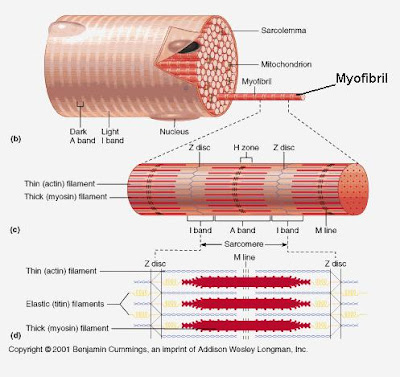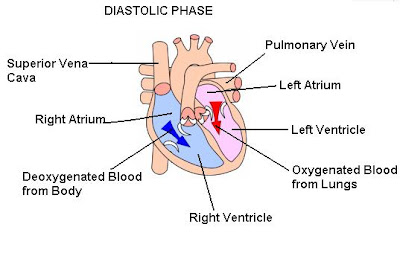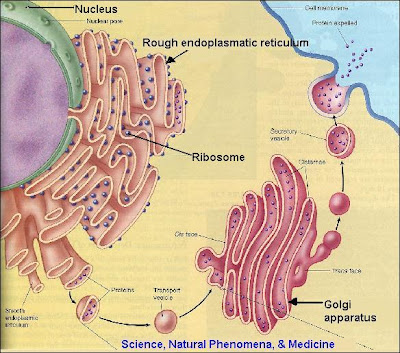Thursday, February 26, 2009
Neomycin
Neomycin is commonly used as a topical preparation like Neosporin. It can be given orally, too, but it is usually combined with other antibiotics. Neomycin is not absorbed from the gastrointestinal tract, and has been used as a preventative measure for hepatic encephalopathy and hypercholesterolemia.
Neomycin was discovered by the microbiologist Selman Waksman and his student Hubert Lechevalier at Rutgers University in 1949. It is produced naturally by the bacterium Streptomyces fradiae.
Monday, February 23, 2009
Aminoglycosides
Aminoglycosides are potent bactericidal antibiotics that act by creating fissures in the outer membrane of the bacterial cell. They are particularly active against aerobic, gram-negative bacteria and act synergistically against certain gram-positive organisms. Amikacin may be particularly effective against resistant organisms. Aminoglycosides that are derived from bacteria of the Streptomyces genus are named with the suffix -mycin, while those which are derived from Micromonospora are named with the suffix -micin.
Aminoglycosides are used in the treatment of severe infections of the abdomen and urinary tract, as well as bacteremia and endocarditis. They are also used for prophylaxis, especially against endocarditis. Resistance is rare but increasing in frequency. Avoiding prolonged use, volume depletion and concomitant administration of other potentially nephrotoxic agents decreases the risk of toxicity.
The first aminoglycoside, streptomycin, was isolated from Streptomyces griseus in 1943. Neomycin, isolated from Streptomyces fradiae, had better activity than streptomycin against aerobic gram-negative bacilli but, because of its formidable toxicity, could not safely be used systemically. Gentamicin, isolated from Micromonospora in 1963, was a breakthrough in the treatment of gram-negative bacillary infections, including those caused by Pseudomonas aeruginosa. Other aminoglycosides were subsequently developed, including amikacin (Amikin), netilmicin (Netromycin) and tobramycin (Nebcin), which are all currently available for systemic use in the United States.
Saturday, February 21, 2009
Gentamicin
Gentamicin is a water-soluble antibiotic which belongs to the aminoglycoside group and is used to treat many types of bacterial infections, particularly those caused by Gram-negative bacteria. However, gentamicin is not used for Neisseria gonorrhoeae, Neisseria meningitidis or Legionella pneumophila bacterial infections. It is synthesized by Micromonospora, a genus of Gram-positive bacteria widely present in the environment (water and soil). To highlight their specific biological origins, gentamicin and other related antibiotics produced by this genus have generally their spellings ending in ~micin and not in ~mycin.
Gentamicin is a bactericidal antibiotic that works by binding the 30S subunit of the bacterial ribosome, interrupting protein synthesis. It is administered intravenously, intramuscularly or topically to treat infections. Gentamincin is a powerful antibiotic which can destroy a wide range of bacteria, normally Gram-negative bacteria, such as Pseudomonas, Proteus, Serratia, and Gram-positive Staphylococcus. Gentamicin is prescribed in the treatment of septicemia, peritonitis, pneumonia, meningitis, otitis, etc. It is also used in the treatment of some eye infections like blefaritis, conjuntivitis, dacriocistitis, etc.
Gentamicin can cause permanent loss of equilibrioception, caused by damage to the vestibular apparatus of the inner ear, usually if taken at high doses or for prolonged periods of time, but there are well documented cases in which gentamicin completely destroyed the vestibular apparatus after three to five days. A small number of affected individuals have a normally harmless mutation in their mitochondrial RNA, that allows the gentamicin to affect their cells. The cells of the ear are particularly sensitive to this.
Friday, February 20, 2009
Cardiac Muscle
Cardiac muscle shares similarities with skeletal muscle with regard to its striated appearance and contraction, with both differing significantly from smooth muscle cells. Coordinated contraction of cardiac muscle cells in the heart propel blood from the atria and ventricles to the blood vessels of the circulatory system. Cardiac muscle cells, like all tissues in the body, rely on an ample blood supply to deliver oxygen and nutrients and to remove waste products such as carbon dioxide. The coronary arteries fulfill this function.
Cardiac muscle is adapted to be highly resistant to fatigue: it has a large number of mitochondria, enabling continuous aerobic respiration via oxidative phosphorylation, numerous myoglobins and a good blood supply, which provides nutrients and oxygen. In contrast to skeletal muscle, cardiac muscle requires both extracellular calcium and sodium ions for contraction to occur. Like skeletal muscle, the initiation and upshoot of the action potential in cardiac muscle cells is derived from the entry of sodium ions across the sarcolemma in a positive feedback loop.

Thursday, February 19, 2009
Actin
Actin is the monomeric subunit of microfilaments, one of the three major components of the cytoskeleton, and of thin filaments, which are part of the contractile apparatus in muscle cells. Thus, actin participates in many important cellular functions, including muscle contraction, cell motility, cell division and cytokinesis, vesicle and organelle movement, cell signaling, and the establishment and maintenance of cell junctions and cell shape.
Actin has four main functions in cells : 1)to form the most dynamic one of the three subclasses of the cytoskeleton, which gives mechanical support to cells, and hardwires the cytoplasm with the surroundings to support signal transduction. 2) to allow cell motility. 3) in muscle cells to be the scaffold on which myosin proteins generate force to support muscle contraction. 4) in non-muscle cells it functions as a track for cargo transport myosins, non-conventional myosins, such as myosin V and VI. Non-conventional myosins transport cargo, such as vesicles and organelles, in a directed fashion, using ATP hydrolysis, at a rate much faster than diffusion.
Wednesday, February 18, 2009
Myofilament
The filaments of myofibrils constructed from proteins, myofilaments, consist of 2 types, thick and thin. Thin filaments consist primarily of the protein actin; thick filaments consist primarily of the protein myosin.

Myofribril

Tuesday, February 17, 2009
Diastole
Diastole is the period of time when the heart fills with blood after systole. Ventricular diastole is the period during which the ventricles are relaxing, while atrial diastole is the period during which the atria are relaxing. The term diastole originates from Greek and means dilation.
During ventricular diastole, the pressure in the left and right ventricles drops from the peak that it reaches in systole. When the pressure in the left ventricle drops to below the pressure in the left atrium, the mitral valve opens, causing accumulated blood from the atrium to flow into the ventricle.
Myosin
Myosin is a protein having a molecular weight of ~ 470,000 daltons. There are about 300 molecules of myosin per thick filament. Each myosin contains two heads that are the site of the myosin ATPase, an enzyme that hydrolyzes ATP required for actin and myosin cross bridge formation. These heads interact with a binding site on actin.
Systole
The systolic pressure is specifically the maximum arterial pressure during contraction of the left ventricle of the heart. In a blood pressure reading, the systolic pressure is typically the first number recorded. For example, with a blood pressure of 120/80 ("120 over 80"), the systolic pressure is 120. By "120" is meant 120 mm Hg (millimeters of mercury).
Monday, February 16, 2009
Myocyte
The myocyte is a specialized cardiac muscle cell that is approximately 25 µ in diameter and about 100 µ in length. The myocyte is composed of bundles of myofibrils that contain myofilaments. The myofibrils have distinct, repeating microanatomical units, termed sarcomeres, which represent the basic contractile units of the myocyte. The sarcomere is defined as the region of myofilament structures between two Z-lines.

Cardiac Cycle


Sunday, February 15, 2009
Pulmonary Valve

Saturday, February 14, 2009
Papillary Muscle

Chordae Tendineae

Friday, February 13, 2009
Aortic Valve

Mitral Valve

Thursday, February 12, 2009
Tricuspid Valve

Heart Valves

Endocardium

Wednesday, February 11, 2009
Myocardium

Pericardium

Tuesday, February 10, 2009
DNA: Deoxyribonucleic Acid

Meiosis
Interphase is divided into three phases:
1) Gap 1 (G1) phase: This is a very active period, where the cell synthesizes its vast array of proteins, including the enzymes and structural proteins it will need for growth. In G1 stage each of the chromosomes consists of a single (very long) molecule of DNA. In humans, at this point cells are 46 chromosomes, 2N, identical to somatic cells.
2) Synthesis (S) phase: The genetic material is replicated: each of its chromosomes duplicates, producing 46 chromosomes each made up of two sister chromatids. The cell is still considered diploid because it still contains the same number of centromeres. The identical sister chromatids have not yet condensed into the densely packaged chromosomes visible with the light microscope. This will take place during prophase I in meiosis.
3) Gap 2 (G2) phase: G2 phase is absent in Meiosis.

Monday, February 9, 2009
Cytokinesis
Animal cell cytokinesis begins shortly after the onset of sister chromatid separation in the anaphase of mitosis. A contractile ring, made of non-muscle myosin II and actin filaments, assembles in the middle of the cell at the cell cortex, adjacent to the cell membrane. Myosin II uses the free energy released when ATP is hydrolyzed to move along these actin filaments, constricting the cell membrane to form a cleavage furrow. Continued hydrolysis causes this cleavage furrow to move inwards, a striking process that is clearly visible down a light microscope.
Mitosis

Sunday, February 8, 2009
Chromatin

Saturday, February 7, 2009
Chromosome


Plasma Membrane


Friday, February 6, 2009
cytosol

Thursday, February 5, 2009
Cytoplasm
The part of the cytoplasm that is not held within organelles is called the cytosol. The cytosol is a complex mixture of cytoskeleton filaments, dissolved molecules, and water that fills much of the volume of a cell. The cytosol is a gel, with a network of fibers dispersed through water. Due to this network of pores and high concentrations of dissolved macromolecules, such as proteins, an effect called macromolecular crowding occurs and the cytosol does not act as an ideal solution. This crowding effect alters how the components of the cytosol interact with each other.

Mitochondrion

Wednesday, February 4, 2009
Ribosome

Tuesday, February 3, 2009
Endoplasmatic Reticulum
